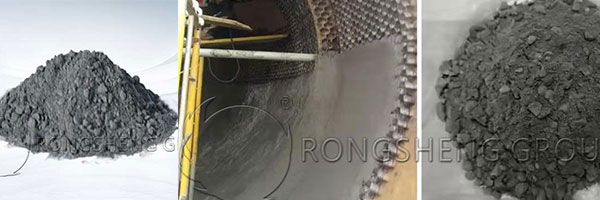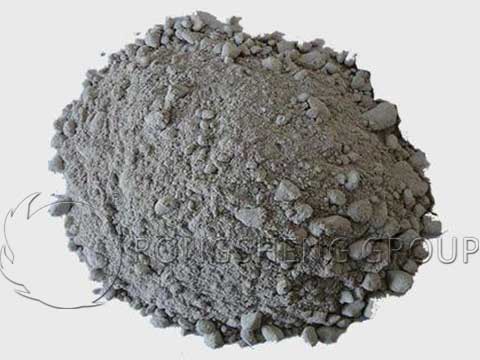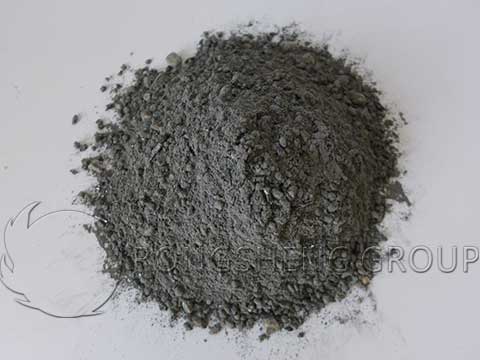The heating hood of the bell-type annealing furnace is in a long-term working environment of alternating high and low temperatures, and is in a rising or falling working state, with poor working conditions. This causes cracks and falling off of the original furnace lining castable, resulting in large heat dissipation losses of the heating hood, serious energy consumption, and excessively high temperatures of the outer wall and burner area. Rongsheng refractory castable manufacturer can provide high-quality heating hood lining castables for annealing furnaces. Contact Rongsheng for free samples and quotes.
Refractory Materials for Heating Hood Lining
The working temperature of the heating hood used for annealing heating is about 850 ℃, and the requirements for the refractory materials of the furnace lining are relatively high. The furnace lining must have good refractory and heat insulation effects. Even if the temperature of the hot surface of the furnace lining reaches 850℃~900℃, the average temperature of the outer wall of the heating hood remains ≤ room temperature + 45℃, and the average temperature of the shell of the burner area remains ≤ room temperature + 55℃. However, due to the cracks and cracking and shedding of the original lining castable of the heating hood, the average temperature of the outer wall and the shell of the burner area is statistically: the outer wall> 75℃ (room temperature 20℃), the shell of the burner area> 85℃ (room temperature 20℃), which has exceeded the design temperature index. Therefore, the refractory materials of the heating hood lining of the annealing furnace are modified to effectively reduce heat loss, reduce the temperature of the outer wall of the furnace and the shell of the burner area, and reduce energy waste.

Problems with Refractory Materials for Heating Hood Lining
The heating hood is welded from large structural steel and a solid electroplated cylinder. The refractory materials for heating hood lining are currently mainly castable structures, which have the following disadvantages:
(1) The lining is a castable structure, the temperature of the outer wall of the furnace top is too high, the heat dissipation loss is large, the energy consumption is serious, and the working environment is harsh.
(2) The lining material is a heavy and light castable structure, and the thermal shock resistance and mechanical vibration performance of the lining material are poor. Cracks are easily generated during use, resulting in serious cracking and peeling of the castable lining, shortening the service life, and making maintenance difficult and expensive.
(3) The castable structure of the lining needs to be baked before use. If the baking effect is not good, it will affect the performance of the lining.
Renovation Plan for Refractory Castable Materials of Heating Hood Lining
Choice of refractory materials At present, refractory ceramic fiber materials are widely used as refractory materials for furnace lining in domestic bell furnace applications. Refractory ceramic fiber materials are a lightweight and efficient thermal insulation material. Compared with traditional insulation materials, they have the following advantages:
(1) Low volume density: Fiber furnace lining is more than 75% lighter than lightweight insulation brick furnace lining and 90%~95% lighter than lightweight castable furnace lining.
(2) Low thermal conductivity: When the average temperature of refractory fiber furnace lining is 400℃, the thermal conductivity coefficient is <0.11 W/m·K. When the average temperature is 600℃, it is <0.16 W/m·K. When the average temperature is 1000℃, it is <0.22 W/m·K, which is about 1/8 of lightweight clay bricks and 1/10 of lightweight heat-resistant lining (castable), with significant insulation effect.
(3) High thermal sensitivity: The thermal sensitivity of refractory fiber lining is much better than that of conventional refractory lining. At present, heating furnaces are generally controlled by microcomputers. The high thermal sensitivity of fiber lining is more suitable for the automatic control of industrial kilns.
(4) No need to bake the furnace: The lining can be put into use after the construction is completed, and no baking procedure is required.
(5) Simple construction: No expansion joints are required during the construction process, and the influence of construction technical factors on the insulation effect of the lining is small.
(6) The disadvantages of refractory ceramic fiber lining are that it is not wear-resistant, has poor thermal shock stability, and is not resistant to hot air erosion. This requires special attention. After long-term use, it will be found that ceramic fiber cotton will produce slag and agglomeration. Sometimes, improper operation will cause pieces to fall off with a slight collision. This may also be due to the fact that the material itself is an insulation product.
Refractory fiber lining has become a trend in the development of furnace linings, representing the level of modernization of industrial furnaces. Whether refractory fiber lining is adopted or not directly determines the use effect, product quality and output of the furnace. Therefore, the selection of refractory ceramic fiber materials to replace the original furnace lining materials must meet the use requirements of the heating hood of the full hydrogen hood annealing furnace in the cold rolling mill.

How High a Temperature Can a Refractory Castable Withstand?
The temperature resistance of a refractory castable depends on the material composition and preparation process. Generally, it can withstand high temperatures, and different types and formulations of refractory castables have different temperature resistance ranges. Special refractory castables can withstand temperatures up to 2000°C, and attention should be paid to the temperature change rate and temperature gradient when using them. The temperature resistance of a refractory castable depends on its material composition and preparation process. Generally speaking, refractory castables can withstand high temperatures, but the specific temperature resistance range varies depending on the type and formulation of refractory castables.
Some common refractory castables, such as high-alumina refractory castables, corundum refractory castables, and low-cement refractory castables, have higher temperature resistance. These materials can generally withstand high-temperature environments of 1500°C to 1800°C.
However, for higher temperature applications, such as in steelmaking, glassmaking, or other high-temperature processes, refractory castables with special formulations and preparation processes may be required. These special refractory castables can withstand higher temperatures, reaching or even exceeding 2000°C.
It should be noted that even if the refractory castable can withstand high temperatures, it is also necessary to pay attention to the rate of temperature change and the temperature gradient to avoid cracking or thermal shock of the refractory castable due to rapid changes. Therefore, in practical applications, it is necessary to select appropriate refractory castables according to specific circumstances and follow relevant instructions and operating specifications.




















